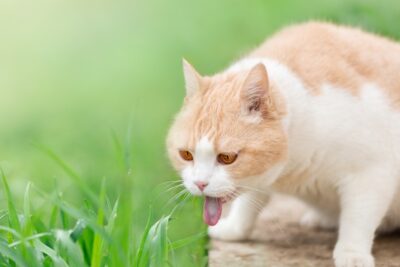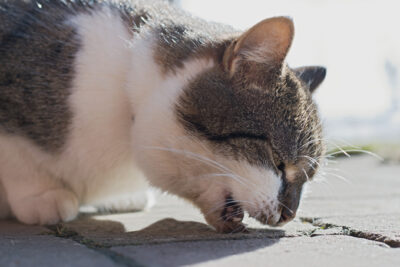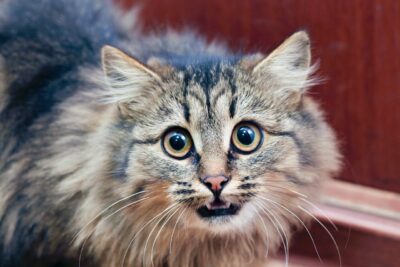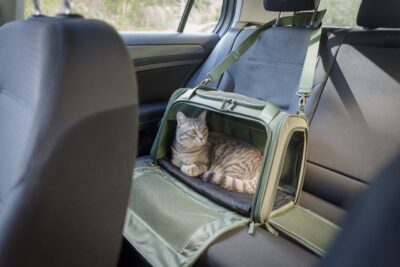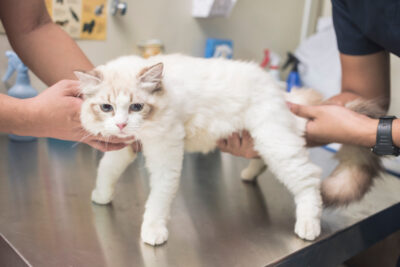Unhealthy Cat Teeth: 6 Signs and How to Help
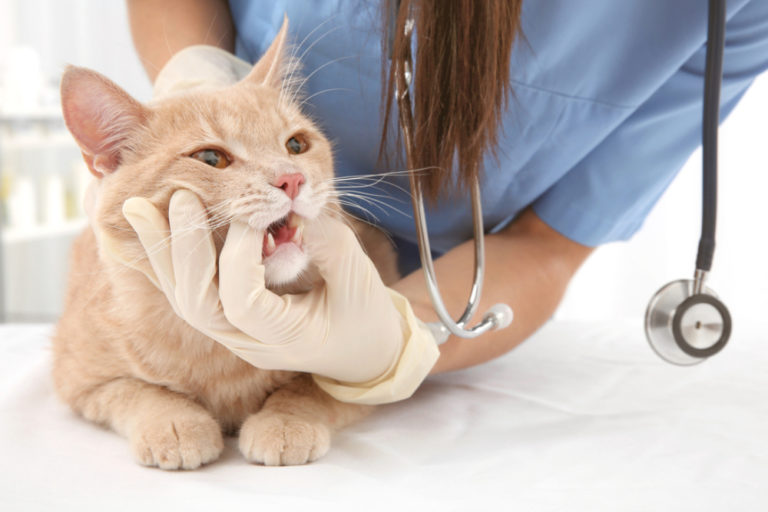
Dental disease affects a significant portion of cats during their lives. It is reported that 50-90 percent of cats who are over 4 years of age have developed dental issues and unhealthy cat teeth [1].
Early stages of dental disease, such as gingivitis, are reversible with appropriate medical care and a professional dental cleaning. However, late-stage tooth decay often requires tooth extraction for full resolution of pain and inflammation.
Poor dental health can negatively affect a cat’s overall well-being and put them at risk for other medical conditions. Fortunately, routine veterinary care and vigilance by pet parents can help reduce the likelihood of unhealthy cat teeth and help keep the mouths of our furry felines clean and pain-free.
What Do Unhealthy Cat Teeth Look Like?
It is much easier for pet parents to spot signs of unhealthy teeth if they are aware of what healthy cat teeth should look like. Healthy teeth are white and free of plaque and tartar. Healthy gums are light pink with no signs of inflammation. Breath should be free of odor.
In cats with dental disease, their mouths are quite the opposite. Unhealthy cat teeth are typically yellow to gray in appearance and covered partly or fully by thick tartar. Unhealthy gums are bright red and appear inflamed. They may bleed frequently as well. Cats with unhealthy teeth typically have bad breath.
Signs of Unhealthy Cat Teeth
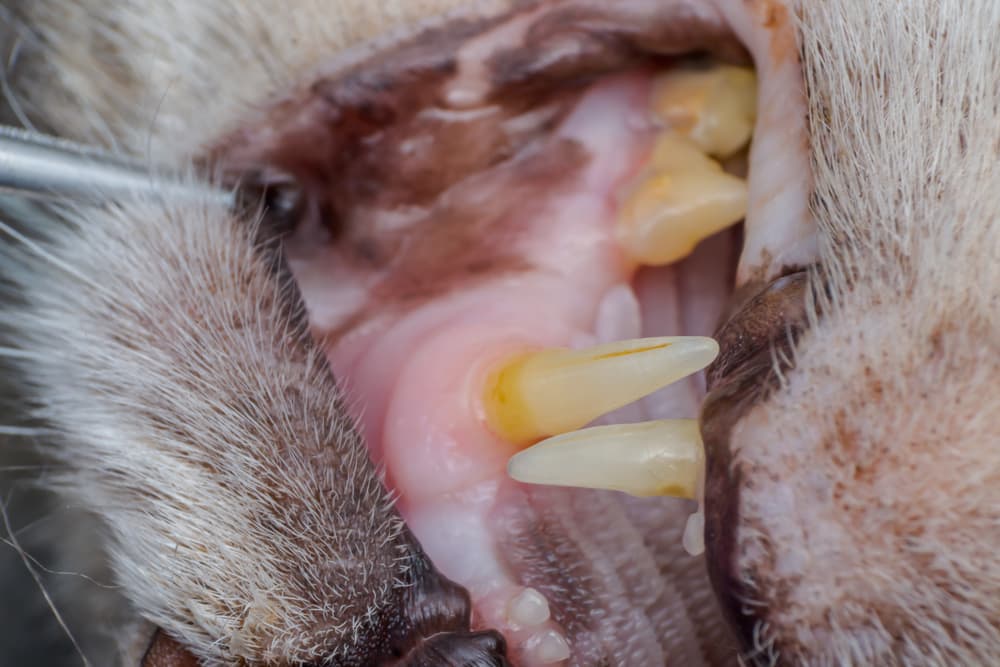
There are a variety of signs pet parents should watch for that may indicate an underlying dental condition in their cats. These signs include the following:
Bad breath. Because there is active inflammation and bacteria present with dental disease, cats with unhealthy teeth often have very bad breath.
Food falling out of the mouth while eating. Cats with unhealthy teeth often experience pain when trying to eat. They may be unable to chew hard pieces of food or avoid closing the affected part of the mouth fully to avoid discomfort. This leads to food falling out on the side that is affected by dental disease.
Not eating due to pain. Cats may choose to forgo their meal because their mouths are painful. They may skip meals, only eat a small portion of their meal, or begin to prefer soft or wet cat food only. This may lead to noticeable weight loss as well.
Pawing at the face or rubbing the mouth. Cats experiencing discomfort in their mouths will often paw at their face or rub the affected side against the ground or other objects to try to get some relief from the pain.
Drooling excessively. Cats with unhealthy teeth often drool excessively. Saliva may pool in the mouth and around the lips, or puddles may be seen on the ground where the cat rests. Saliva may also be blood tinged.
Loose or missing teeth. Cats with periodontal disease often have teeth that are loose or missing. Sometimes pet parents find a lost tooth around the house, which can signify a dental problem.
Sometimes, it is not obvious to pet parents that there are issues present in their cats’ mouths. This is where routine veterinary care is beneficial to detect these health issues early.
What Causes Unhealthy Cat Teeth?
There are a variety of reasons that cats may develop unhealthy teeth and gums. Lack of routine veterinary care can predispose cats to developing dental disease since tooth issues are not detected early, and they tend to progress quickly without appropriate intervention. Some cats are simply predisposed due to their genetics.
Certain diseases may contribute to greater accumulation of plaque on the teeth and subsequent gingivitis. Viruses, such as feline leukemia virus, calicivirus, and feline immunodeficiency virus may play an important role in the development of dental issues in cats. In addition, kidney disease and diabetes may also contribute [1].
Age may be a contributing factor in tooth decay. This is because dental calculus continues to build up over a cat’s lifetime if routine dental cleanings and at-home dental care are not done regularly.
The Dangers of Unhealthy Cat Teeth
Unhealthy teeth can cause a variety of issues for your cat. Dental issues can contribute to a poor quality of life for cats since problematic teeth are incredibly painful. Cats may lose a significant amount of weight because it is too uncomfortable to eat when their mouths are so inflamed. It is important for decaying cat teeth to be removed to prevent this pain and suffering in cats.
As mentioned, unhealthy teeth can lead to gum infections due to the significant number of bacteria collecting in the mouth. These bacteria can spread from the mouth to the heart valves through the bloodstream, which can lead to heart disease. The liver and kidneys can also be negatively impacted by poor oral health.
What to Do If Your Cat Has Unhealthy Teeth

If you suspect your cat has unhealthy teeth, bring him to the veterinarian as soon as you can. Your veterinarian will perform a thorough exam to detect any problematic areas in your cat’s mouth. If there are any concerning areas, a professional dental cleaning and dental X-rays may be recommended in order to better assess the extent of disease.
If necessary, some teeth may be extracted during the dental cleaning. This procedure is done under general anesthesia, and it involves using special instruments to remove calculus from teeth that are healthy enough to stay and removing the crown and root of teeth that are too diseased to keep. Appropriate medications to reduce infection and inflammation may be prescribed following the procedure.
Cats who have had a large number of teeth extracted may be unable to chew a dry diet and may need to switch to a wet food.
How to Prevent Tooth Decay in Cats

Pet parents can brush their cats’ teeth daily and provide dental treats to prevent as much plaque buildup as possible. Tooth brushing should only be done with a cat-specific toothbrush and toothpaste.
If your cat is currently eating wet food only, switching to a dry diet can help scrape the teeth clean while he eats. There are diets specifically formulated for dental health that your veterinarian can recommend or prescribe as well.
If tooth issues are arising from underlying health conditions, such as FeLV or FIV, it is important to manage those diseases first. Your veterinarian can provide the best treatment plan to address any underlying conditions as well as any concerns surrounding oral health.
Annual to semi-annual veterinary check ups can help identify any tooth issues early and prevent the progression to advanced periodontal disease. Yearly professional dental cleanings are the best way to prevent dental disease. Regular veterinary care coupled with diligent home care is essential in keeping a cat’s teeth as healthy as they can be.
